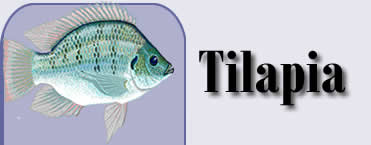Farming Tilapia
Even the Ancient Egyptians farmed tilapia in ponds along the Nile and small scale tilapia farming is still an important source of protein for many families around the world. Large scale commercial farming can be problematic due to the rapid production of offspring that will compete for food with the adult fish, but several techniques have now been developed to combat that problem. The fish can for instance be kept in densely stocked tanks or cages, since this disrupts reproduction in tilapia. When tilapia is cultivated in ponds, it is common to keep male fish only to avoid unwanted offspring.
The four species of tilapia most commonly grown as food fish in aquacultures are Nile tilapia (Oreochromis niloticus), Blue tilapia (Oreochromis aureus ) and Mozambique Tilapia (Oreochromis mossambicus). Today, hybrids of these species – sometimes with genetic material from other species as well – are popular as well.
Even though tilapia has been utilized as food in Africa and the Levant for thousands of years, it would take until the 20th century before the tasty tilapia really caught on outside this region. In the 1940s, tilapia farming commenced in Asia and this is still where you will find a majority of the major tilapia producing countries in the world. By the end of the century, China, Indonesia, Taiwan, Thailand and the Philippines produced over 75 percent of the worldwide aquaculture production of tilapia. In 2001, their combined production exceeded 1 million metric tonnes.
During recent years, several Latin American countries have taken an interest in tilapia farming and commercial tilapia production is currently being developed in quite a few countries in the region, including Mexico, Brazil, Columbia and Costa Rica.
Over 95 percent of the global tilapia supply is imported to the United States where tilapia is an appreciated food fish. The United States has its own domestic production as well, but it is much too small to satisfy consumer demands. The import of tilapia to Europe is believed to increase significantly in the near future as more and more consumers are looking for suitable to alternatives to white fish fillets due to environmental concerns.
Read more about tilapia farming in the rest of the tilapia cultivation articles on this or by visiting ATA (American Tilapia association).
